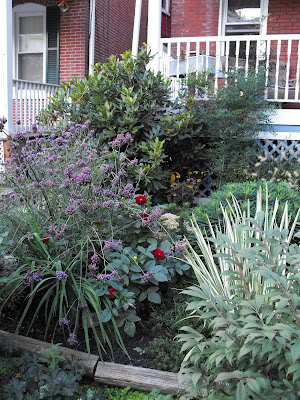Occasionally I lament the passing of the past. Not the passing of time per se, but the passing of that which was and the passing of the ways which were.
Take, for instance, the imagination. I do not have children, and so those who do may dismiss this entry as pure nonsense. But many of the children I do know no longer have a world unto themselves, an imaginary, constructed world of secret languages and codes, of mysterious villages constructed of sticks and rocks, of potent potions and fantastical identities, a world apart from the adult realm that supervises them and exists unto itself. No, these children can purchase ready-made imaginary worlds in the form of boxed computer games, which are in my view adult worlds that have infiltrated children-dom and hijacked the childhood imagination, or perhaps they are relics of childhood imagination that have infiltrated the adult world as a measure of necessary escape (I can’t figure out which). Imagination comes prepackaged, prearranged, pre-thought, and the most damnable of them all, prescribed. And this, I think, affects the future, for those without the ability to exercise an imagination, for those who are accustomed to having the answers and the possibilities articulated for them—well, they find it almost excruciatingly difficult to expand the proverbial envelope, to imagine alternatives and possibilities. And that I find very, very sad indeed.
But the good news is that the art of imagination can, with practice, be relearned.
And so I found particular comfort and joy this past summer dining with Viet’s now formerly London-based cousins, D and L, and their children, S and R, in their garden on cool July evenings. S and R, are delightful young adults (I hesitate to call them children because, though they are 11 and 10 respectively, are so advanced and enjoyable to converse with—dangling prepositions aside), whose imaginations are rich, their intellects active and curious. On two evenings, the conversation evolved into a sharing of riddles.
The riddle—either the enigmatic or the conundrum—with their double or veiled meanings, conflate multiple realities and force us to disassemble the whole and see reality through different lenses. Riddles teach us to think differently, to imagine, to appreciate the multiple prisms through which our realities may be interpreted.
So, dear reader, I have a (pseudo) riddle for you: what nourishes the more it depletes (or, alternatively, what fulfills the more it drains)?
Or, more perversely, in the spirit of the riddle: what do cat litter buckets, neuroses, and water have in common?
Any idea?
Not yet?
Well, the answer to my (pseudo) riddle is a water barrel, and the answer to the question in the spirit of a riddle is me, as in the author of this blog.
(All that from contemplating a water barrel? Now that’s a riddle.)
A friend recently remarked that compared to my garden, hers is a desiccated mess. Another friend quipped that my water bill must be atrociously high.
A partial response to the first comment is that I selectively photograph. Some plants have thrived in Delaware’s near record-breaking drought and record-breaking heat; a few have died; and several do struggle. My pride dictates that I do not post pictures of dead or dying plants, though a master gardener I am most certainly not! But thanks to my water barrel, and to my neurotic behavior which compels me to run outside during even drenching rains to fill 6 large former cat little buckets with water from the barrel, thus capitalizing on the captured water and enabling the barrel to refill--thanks to both for my gardens are performing rather well.
We’ve had 3 rains (fairly light) since June (2 of which were in August), and though those rains have not provided adequate moisture, forcing me to use the hose twice, they have provided me with just enough water to keep most plants looking healthy during these exceedingly trying times.
The large rhododendron conceals the rain barrel, which I’ve attached to the front porch roof downspout; hence the sole source of water is that which collects on the porch roof. All other gutters are “internal,” as was customary to design 92 years ago, and combine to produce only 2 downspouts (one in the front, and one in the rear of the house). The front porch is of average size. I raise that point because a rain shower of a mere 1/3 of an inch of rain will nearly twice fill the barrel!
Rain barrels: the answer to the riddle of what keeps on giving the more it drains.



No comments:
Post a Comment